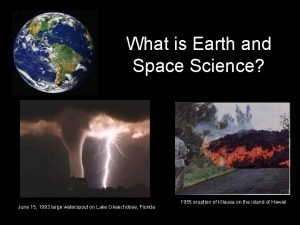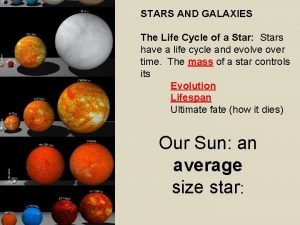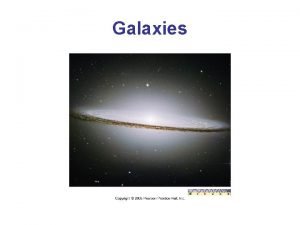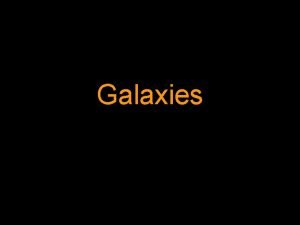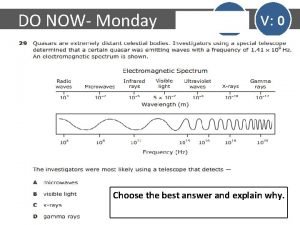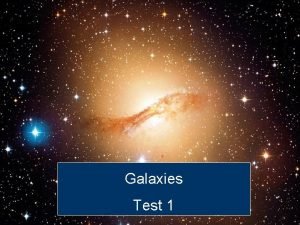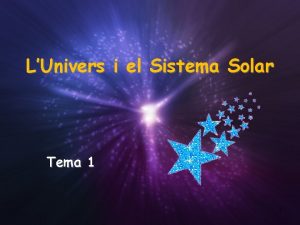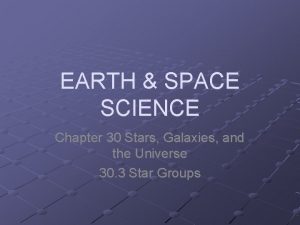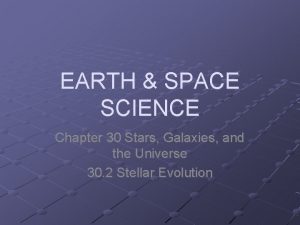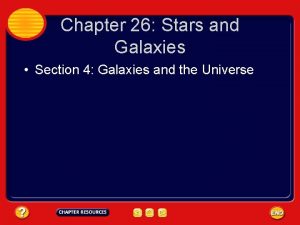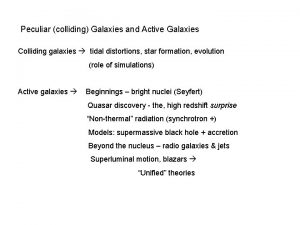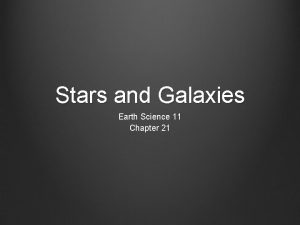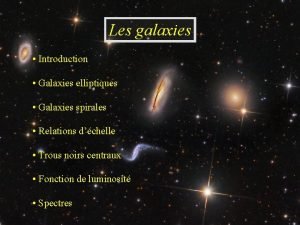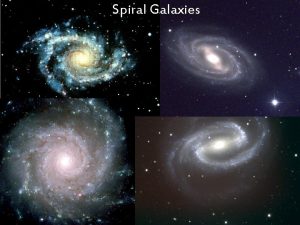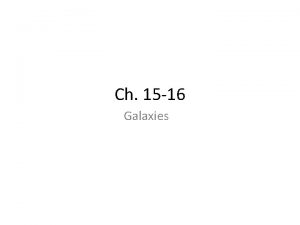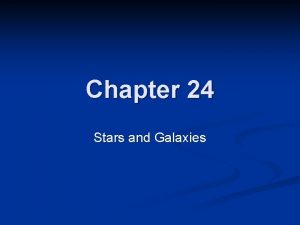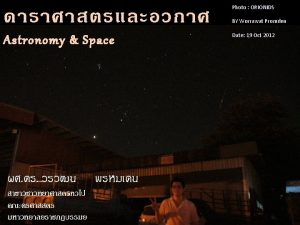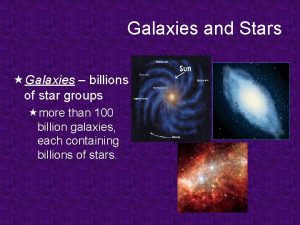EARTH SPACE SCIENCE Chapter 30 Stars Galaxies and
















- Slides: 16

EARTH & SPACE SCIENCE Chapter 30 Stars, Galaxies, and the Universe 30. 4 The Big Bang Theory

http: //watchtvbox. blogspot. com/2012/01/big-bang-theory -season-5 -episode-14. html

30. 4 The Big Bang Theory Objectives Explain how Hubble’s discoveries lead to an understanding that the universe is expanding. Summarize the big bang theory. List evidence for the big bang theory

Hubble’s Observations Cosmology is the study of the origin, properties, processes, and evolution of the universe Cosmologists and astronomers can use the light given off by an entire galaxy to create the spectrum for that galaxy. Edwin Hubble used galactic spectra to uncover new information about our universe.

http: //famousscientist. ne t/page/4

Hubble’s Observations Measuring Red Shifts n n n Hubble found that the spectra of galaxies, except for the few closest to Earth, were shifted toward the red end of the spectrum. Hubble determined the speed at which the galaxies were moving away from Earth. Hubble found that the most distant galaxies showed the greatest red shift and thus were moving away from Earth the fastest.

http: //www. rpdp. net/sciencetips_v 2/ E 12 B 5. htm http: //en. wikipedia. org/wiki/File: R edshift_blueshift. svg

Hubble’s Observations The Expanding Universe n n Using Hubble’s observations, astronomers have been able to determine that the universe is expanding. The expanding universe can be thought of as a raisin cake rising in the oven. If you were able to sit on one raisin, you would see all the other raisins moving away from you. Similarly, galaxies in the universe are moving farther away from each other due to the expansion of the universe.

http: //spot. pcc. edu/~aodman/G S%20107%20 web/ss%20 lectur e/ssindex. htm

The Big Bang Theory The big bang theory that all matter and energy in the universe was compressed into an extremely small volume that 3 to 15 billion years ago exploded and began expanding in all directions. By the mid-20 th century, almost all astronomers and cosmologists accepted the big bang theory.

http: //www. universetoday. com/92131/whydo-we-live-in-three-dimension/

Cosmic Background Radiation n n n Cosmic background radiation is radiation uniformly detected from every direction in space; considered a remnant of the big bang. Astronomers believe that cosmic background radiation formed shortly after the big bang. The background radiation has cooled after the big bang, and is now about 270°C below zero.

The Big Bang Theory Ripples in Space n n Maps of cosmic background radiation over the whole sky show ripples. These ripples are irregularities caused by small fluctuations in the distribution of matter in the early universe, and may indicate the first stages in the formation of the universe’s first galaxies.

Timeline of the Big Bang

A Universe of Surprises Dark Matter n n Analysis of the ripples in the cosmic background radiation shows that the matter that humans, the planets, the stars and the matter between the stars makes up only 4% of the universe. About 23% of the universe is made up of a type of matter that does not give off light but that has gravity. This type of matter is called dark matter.

A Universe of Surprises Dark Energy n n n Most of the universe is made up of an unknown material called dark energy. Scientists think that dark energy acts as a force that opposes gravity. Many scientists think that some form of undetectable dark energy is pushing galaxies apart.
 Waves are produced by stars and galaxies.
Waves are produced by stars and galaxies. Chapter 30 galaxies and the universe
Chapter 30 galaxies and the universe There are millions of stars in space
There are millions of stars in space Space scientific definition
Space scientific definition Elliptical, spiral and irregular.
Elliptical, spiral and irregular. Life cycle of a galaxy
Life cycle of a galaxy Elliptical galaxies facts
Elliptical galaxies facts Th eirregulars
Th eirregulars The pity relation for an adiabatic expansion is
The pity relation for an adiabatic expansion is Milky way galaxy shape
Milky way galaxy shape Types of galaxies
Types of galaxies Brainpop galaxies quiz answers
Brainpop galaxies quiz answers 4 types of galaxies
4 types of galaxies How are active galaxies classified?
How are active galaxies classified? Tipus de galaxies
Tipus de galaxies Type of galaxy
Type of galaxy Evolution of galaxies
Evolution of galaxies



